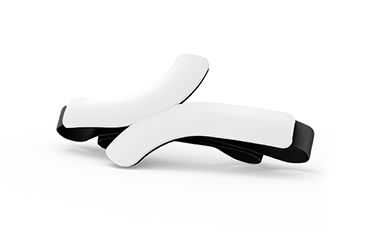Heart rate variability measures the changes in the time interval between individual heart beats as some beats might be closer to each other and some further apart. But heart rate variability is not strictly used in medical monitoring only – it is also a valuable metric to optimize training intensity. Learn how to use heart rate variability to schedule your training session and how to get the most out of heart rate variability testing here.
What is heart rate variability training?
Heart rate variability used to be a secret tool for elite athletes only, but luckily today there is a convenient way for anyone with a smartphone to analyze their recovery. Tracking heart rate variability for training purposes has great value as it gives data on how your body is coping with the combination of training and your general lifestyle activities.
What is good heart rate variability in training?
Heart rate variability for training purposes can be described as the variation in heart rate that occurs when you breathe in and out at rest. Higher HRV values are better, as those indicate the body is coping with the stress of training and the load on the body better, with faster recovery capabilities. Recurrent low values of heart rate variability might indicate chronic stress. For objective analysis, HRV values should be measured at the same time of the day, with an ECG monitor and compared to the person’s baseline to be meaningful.
How do you use HRV to make training more meaningful?
HRV in training is used to optimize training schedule and load as its values is an indicator of the training readiness. If you body is in the unstressed, optimal state, you can work harder during your workout and you are less likely to suffer injuries. As such, HRV values are used to predict the best time for your workout to get the most out of your training session.
What is the best HRV monitor for training?
To get the most accurate HRV values it is recommended to use a medical grade ECG monitor to chart heart rate variability values. Unfortunately, the choices are limited as most monitors that are built for data quality are not compatible with daily activities, let alone sports and high intensity training. Luckily, QardioCore offers a solution combining quality and design that is easy to use during any activity, including sports and elite training. With QardioCore, heart rate variability is derived from its medical grade ECG trace and it tracks many other useful values such as heart rate, steps, distances, respiratory rate and skin temperature. See how this innovative wearable monitor can help you improve your results.
Sources:
American Heart Association




